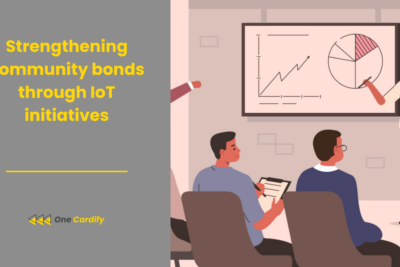
Streamlining campus operations with IoT
In the fast-moving digital world, educational organizations are always seeking to improve their operational efficiency. Implementation of IoT for campus operations is one of most strong strategies for this. With the help of IoT solutions, a campus can centralize resource utilization, increase safety, and provide an interactive learning experience.This detailed blog entry covers all aspects of the incorporation of IoT technologies in the daily life of the educational campuses. IOT is improving the academic environment by automating asset tracking, managing energy and enhancing security among others.The realization of the implications and gains from this technology adoption will allow the administrators to be more informed and to give the opportunity for the smarter and better linked educational future.
Introduction to IoT in Education
The IoT is a series of interconnecting components that gather and share data, rendering operations more efficient. Under education when it comes to using smart devices and systems all across the campuses to optimize process.IOT in education is not just limited to the traditional teaching methods where smart thermostats regulate temperatures and even RFID tags are used for asset tracking that encompasses every part of the campus operations.Through the implementation of the IoT technology, traditional campuses are turned into smart campuses and become more efficient, secure, and comfortable for learning.
Related content
Enhancing Security and Safety
Security and safety measures are one of the leading advantages of IoT in educational institution. Live video feeds from smart cameras and motion sensors enable the control of the activity on campus; this is an important part of student and staff safety.IoT devices can also facilitate emergency response by automating alerts and lockdown procedures to boost the safety of the campus.In addition, IoT enabled wearable devices could track the student health and hence inform the authorities about any accidents or health crises.In this way, the IoT technology ensures the security of the physical campus and creates a safe learning environment.This assimilation leads to the decrease of operational expenses, the increase of the safety level, and the will of student and staff.
Optimizing Energy and Resources
Resource efficiency on campuses is greatly enhanced by IoT technology. IoT-powered smart lighting and HVAC systems that are based on occupancy cut down on the usage, and more so energy consumption.And water management systems also use IoT to measure and control water usage, there by preventing wastage.This reduces utilities costs and places educational institutions at the forefronts of environmental sustainability.In addition, IoT by way of maintenance applications can forecast equipment failures so that costly repairs and downtime are prevented.The adoption of the IoT technologies significantly improves operational efficiency. Sensors of asset tracking monitor the whereabouts of valuable assets and thereby minimize losses and thefts.Automated scheduling systems for rooms and resources ensure no double bookings are made and that utilization is optimized.In addition, IoT can enhance parking solutions by managing the traffic flow and quality of the campus services for the students and the faculty.IoT’s effects reach dining facilities as well, where smart inventory control provides fresh supplies, while waste is minimized.
Facilitating a Better Learning Environment
Iot devices make the learning environment better through provision of personalized and interactive experiences. Smartboards and IoT based labs provide students with learner-centred hands-on activities, adjusting to individual learning paces.The other function of environmental monitoring is to guarantee that classrooms provide the best conditions for concentration and learning.Moreover, with voice-activated devices and navigation assistance, IoT can also help students with disabilities achieve an inclusive education.
Challenges and Considerations
Although, there are advantages of integrating IoT into campus operations, it also comes with challenges. Data security and privacy are major issues with institutions having to protect sensitive data.Furthermore, the first installment and the cost of maintaining IoT infrastructure may be quite high.These systems also require technical skills to manage them, while also making sure the digital divide doesn’t become wider, giving equal access to all students.
Conclusion
The use of IoT for the optimization of campus activities implies a perspective of the renovation of educational institutions. It assures operational effectiveness, improved security, as well as superior education.Yet, a successful attempt in this direction calls for detailed preparation, good funding and continuous control. IoT adoption is much more than just the implementation of new technologies, it is a path to a smarter and more sustainable future in education.
In education, IoT refers to the network of interconnected devices and systems used across campuses to improve efficiency, security, and the learning environment.
IoT enhances campus security through real-time monitoring with smart cameras and sensors, automated emergency responses, and health monitoring wearables for students.
Yes, by optimizing energy consumption, preventing resource wastage, and predictive maintenance, IoT can significantly reduce operational costs.
IoT contributes by offering personalized learning tools, ensuring optimal classroom conditions, and aiding students with disabilities, thereby enhancing the overall learning experience.
Challenges include data security, the cost of implementation and maintenance, the need for technical expertise, and ensuring equal access to technology.
Given the long-term benefits of improved efficiency, security, and learning environments, the investment in IoT is considered worthwhile for forward-thinking institutions.
Schools can ensure data privacy by implementing robust cybersecurity measures, regular data audits, and adhering to data protection regulations.






Related Posts